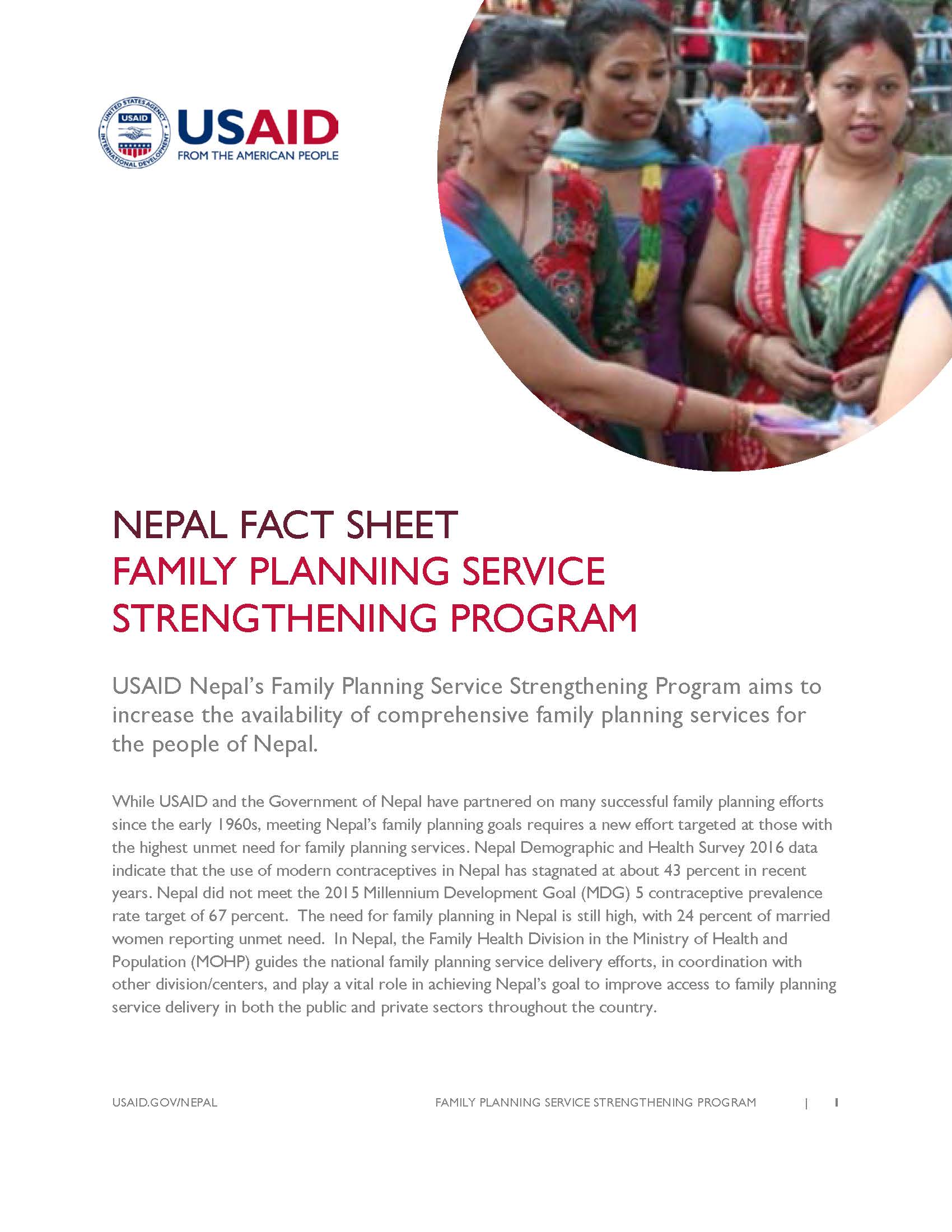Speeches Shim
While USAID and the Government of Nepal have partnered on many successful family planning efforts since the early 1960s, meeting Nepal’s family planning goals requires a new effort targeted at those with the highest unmet need for family planning services. Nepal Demographic and Health Survey 2016 data indicate that the use of modern contraceptives in Nepal has stagnated at about 43 percent in recent years. Nepal did not meet the 2015 Millennium Development Goal (MDG) 5 contraceptive prevalence rate target of 67 percent. The need for family planning in Nepal is still high, with 24 percent of married women reporting unmet need. In Nepal, the Family Health Division in the Ministry of Health and Population (MOHP) guides the national family planning service delivery efforts, in coordination with other division/centers, and play a vital role in achieving Nepal’s goal to improve access to family planning service delivery in both the public and private sectors throughout the country.
PROGRAM OVERVIEW
The Family Planning Service Strengthening program is a four-year, $10 million activity that aims to help the MOHP achieve MDG 5 by increasing access to and the use of quality family planning services in Nepal, particularly focusing on populations with high unmet need; improving the quality of family planning services, including counseling; and enhancing the capacity and competency of health workers by providing training, supportive supervision, and on-site coaching and mentoring.
PROGRAM ACTIVITIES
- Competency-based training for government health workers on intrauterine contraceptive devices, implant, non-scalpel vasectomy, and minilaparotomy
- Interpersonal communication training for government health workers improves interpersonal communication
- District capacity building including technical and logistic support to provide all FP services using all available method
- Post-training follow up, coaching, and mentoring
- Comprehensive service provision including postpartum family planning through a range of government-run static clinics and mobile clinics managed by both government and Civil Society. Social behavior change communications through street drama, radio, interpersonal communication, and TV programs, to encourage use of family planning
- Helping MOHP ensure the quality of the family planning data reported in its Logistic Management Information System and Health Management Information System
KEY RESULTS
- Increased availability of quality family planning services and methods at clinics, voluntary surgical contraception service sites, satellite clinics, and mobile camps
- Expanded capacity of clinics to provide a full range of services and methods, including long acting reversible and permanent methods, in selected district hospitals, primary health care centers, health posts, and health facilities with birthing centers
- Strengthened outreach, satellite, and mobile comprehensive clinics’ ability to provide all family planning methods, focusing on vulnerable groups
- Increased capacity of health workers to deliver quality, comprehensive family planning services, including demonstrated skills in the areas of counseling, task shifting, and skills transfer


Comment
Make a general inquiry or suggest an improvement.